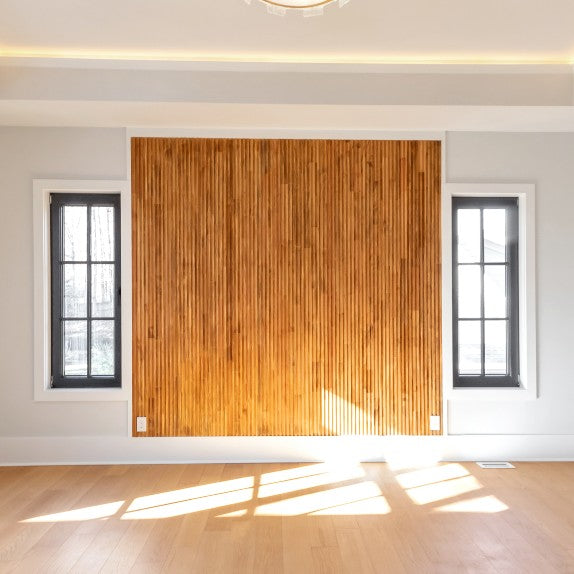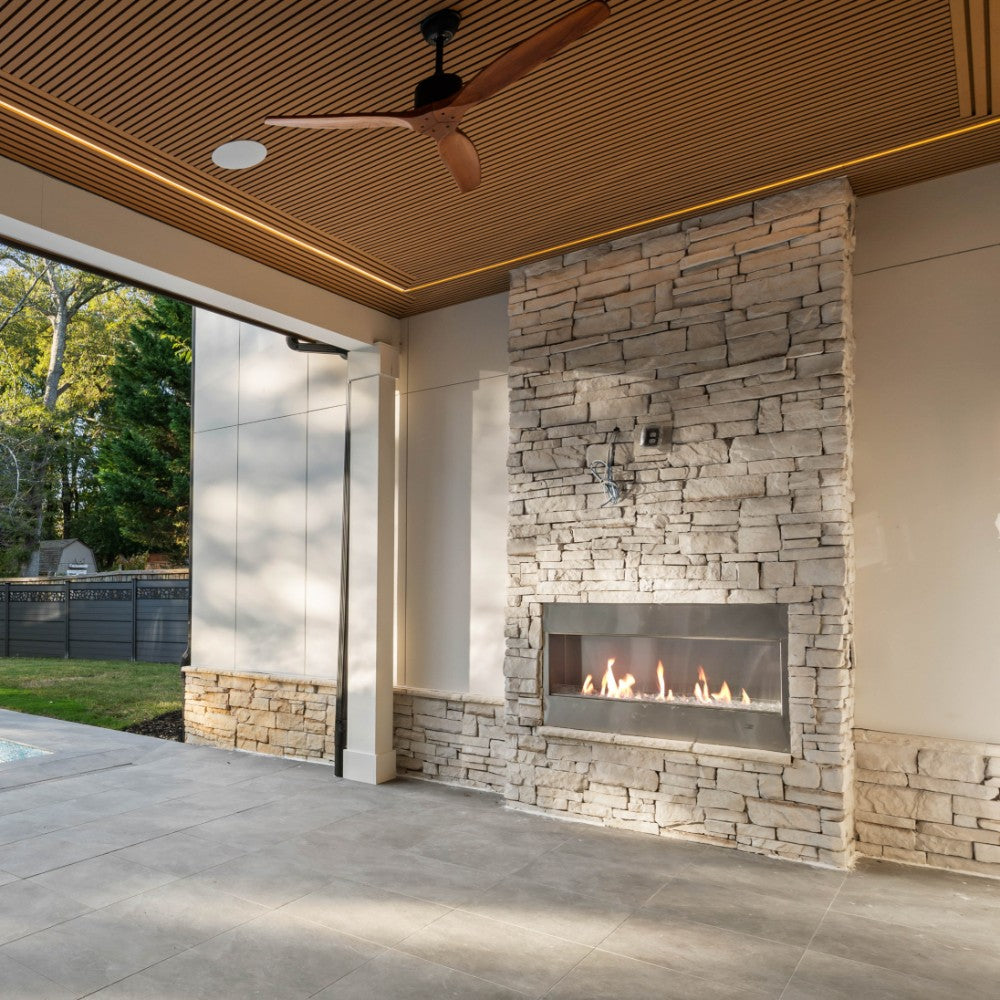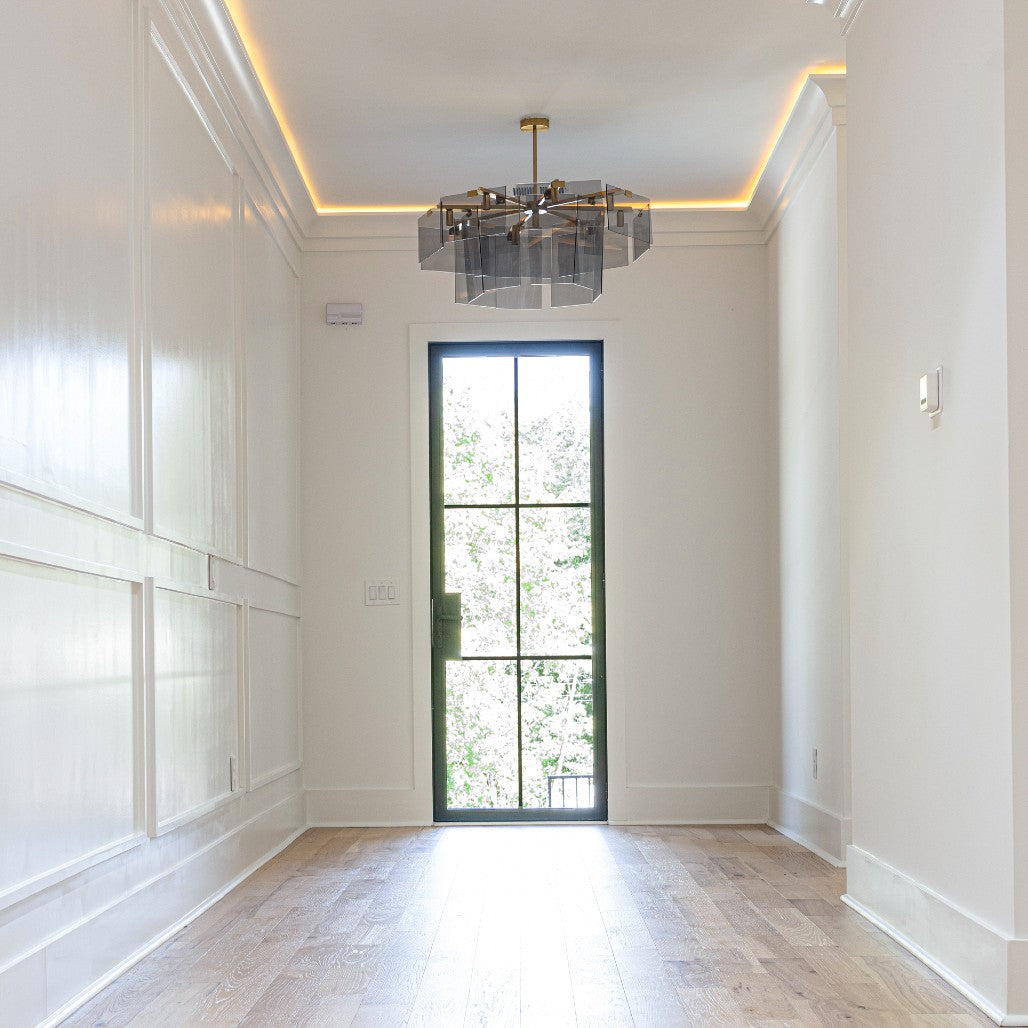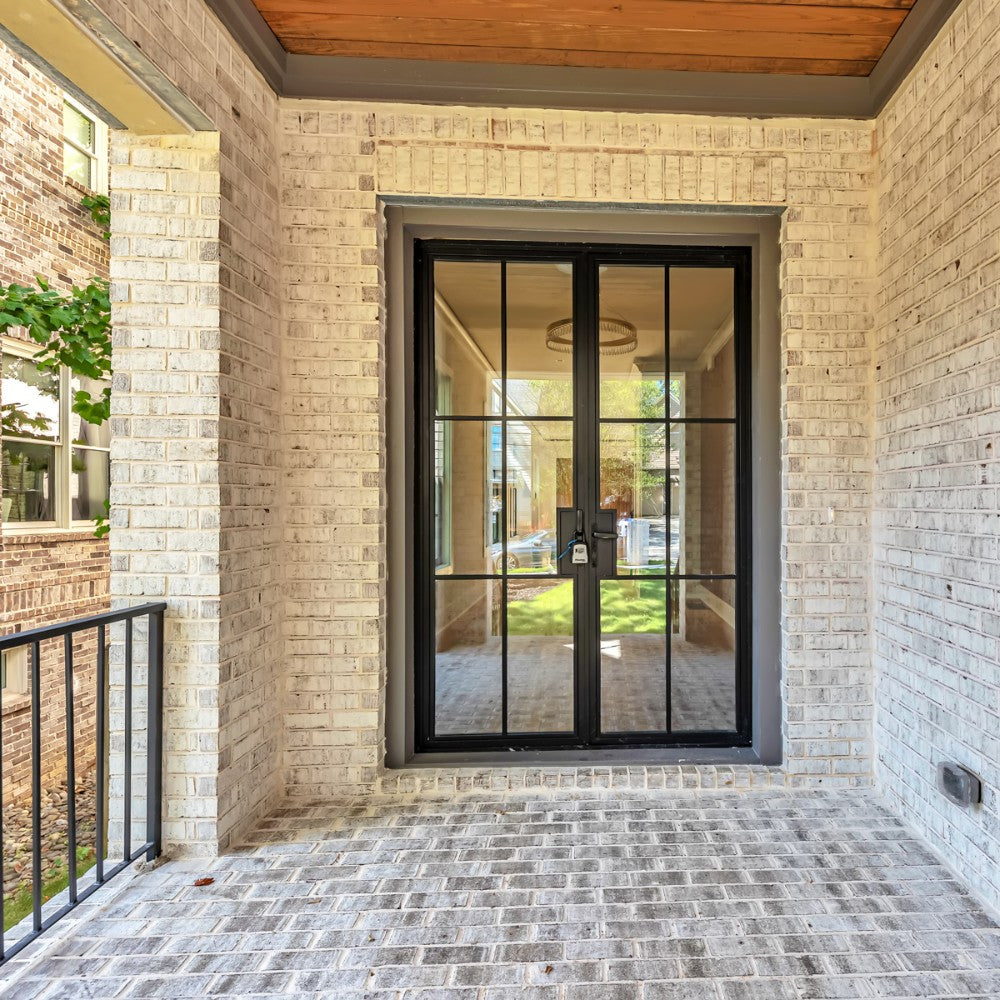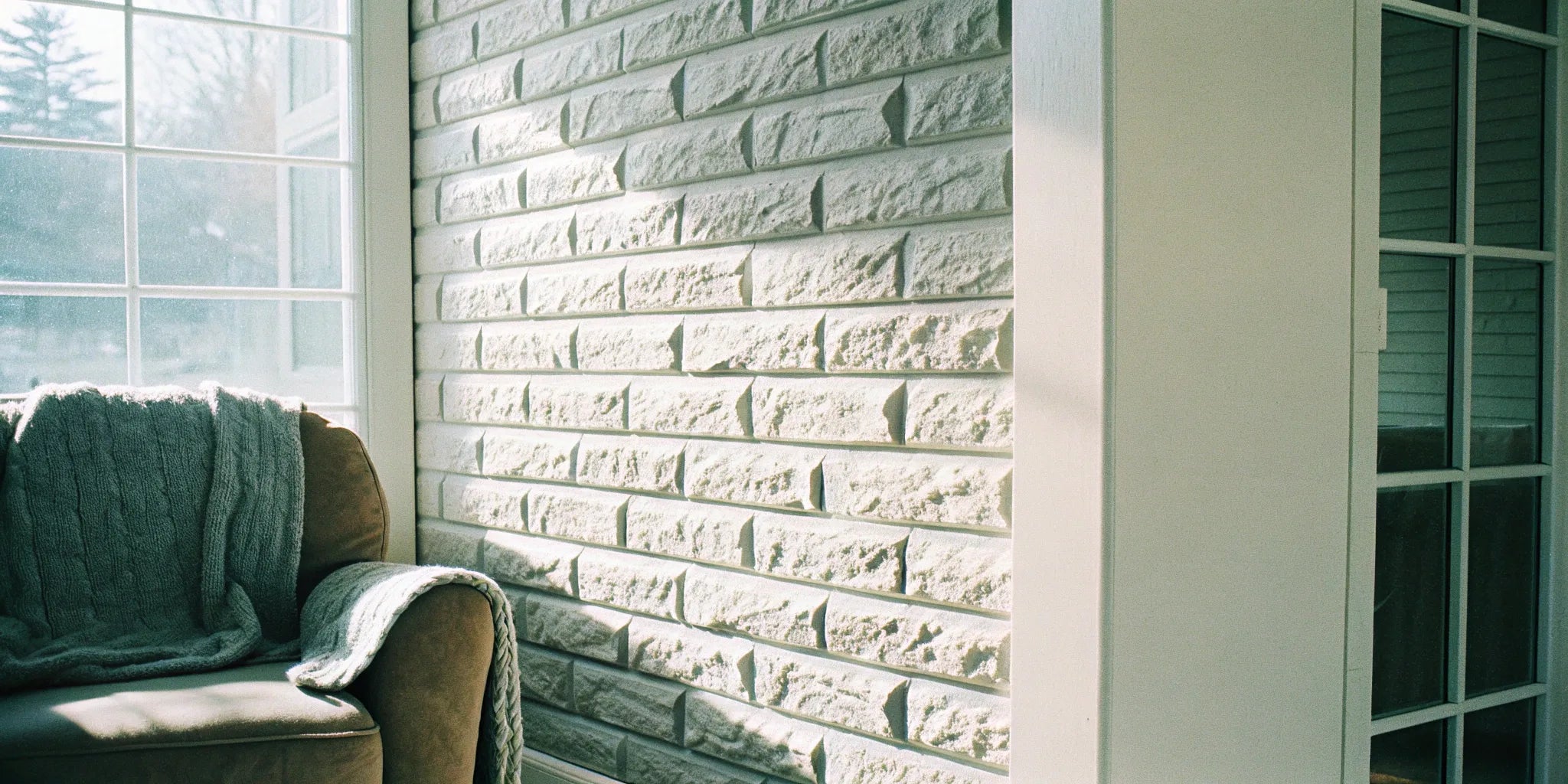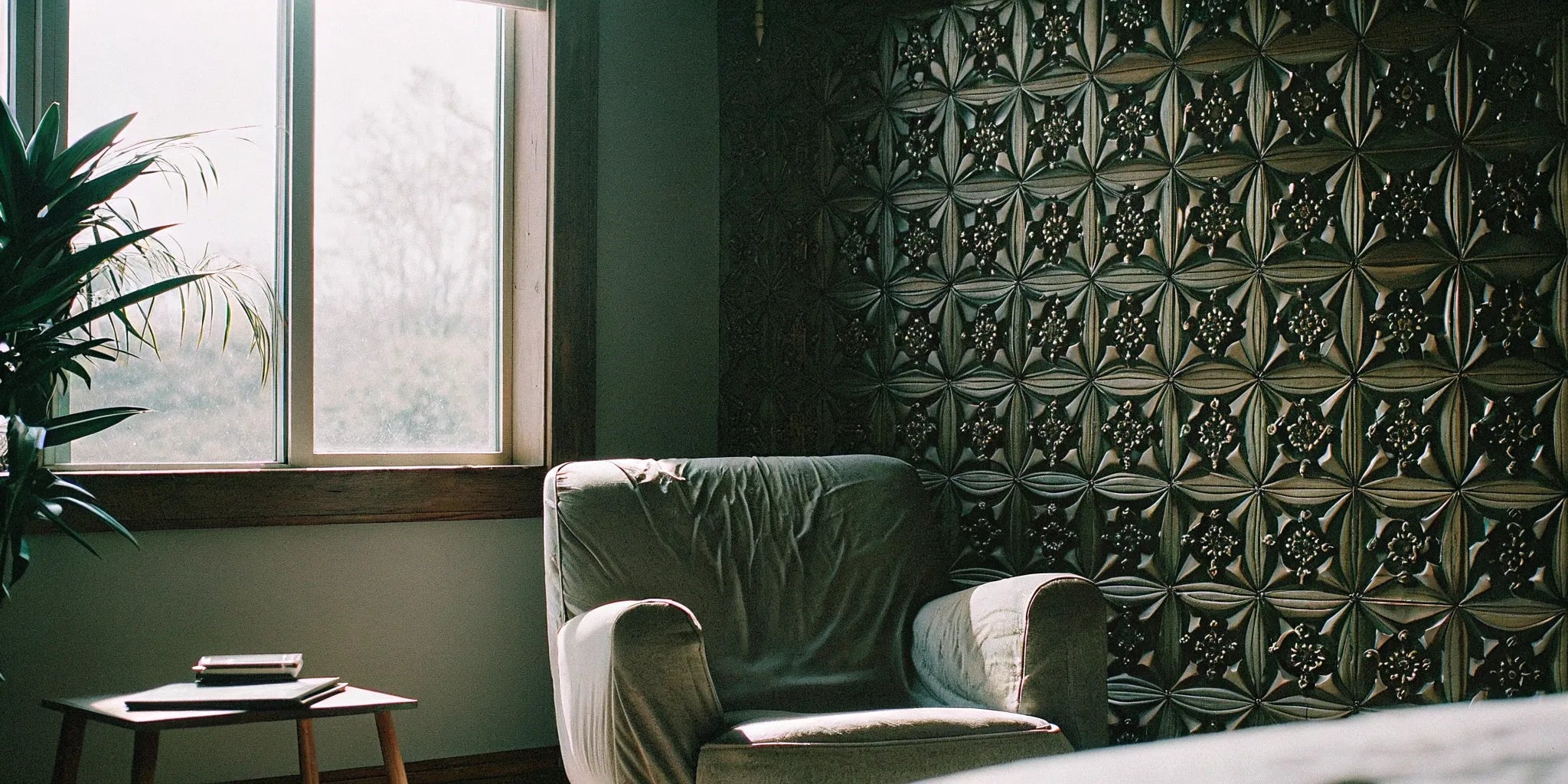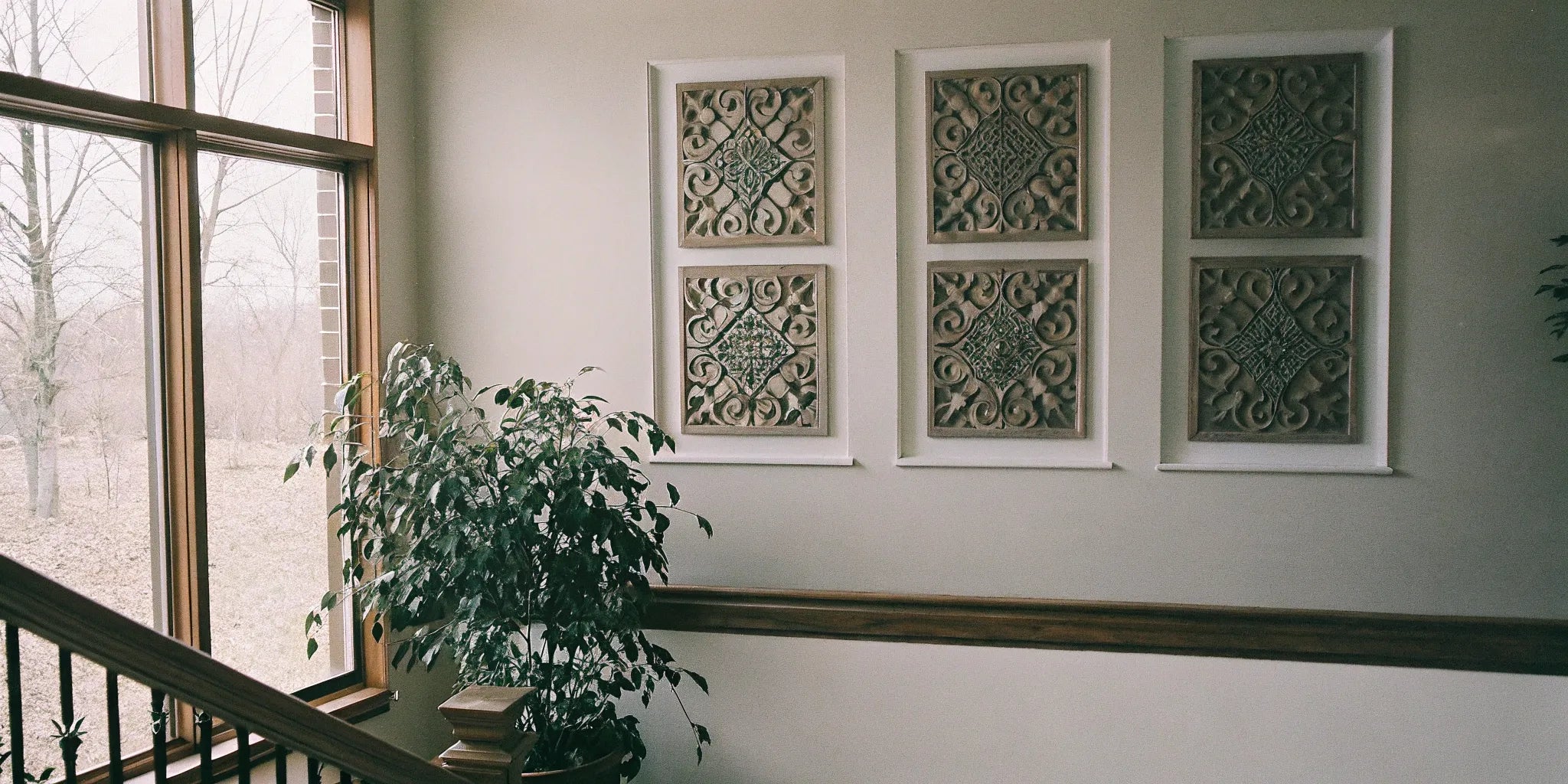
3D Wall Panels: A Complete Guide for Stunning Walls
If you’ve ever felt like a room is missing something, texture is often the answer. While paint adds color, a 3D wall panel adds a layer of personality and dimension that can define an entire space. Think of them as art for your walls—a way to create a custom feature that reflects your unique style. You can introduce sleek, geometric patterns for a modern feel or soft, wavy lines for a more organic look. This guide will help you explore the different materials and designs, making your search for the perfect 3d wall panels for sale in Michigan an inspiring part of your creative process.
Key Takeaways
- Select the right material for your room's needs: Choose moisture-resistant PVC for bathrooms or durable MDF for high-traffic areas to ensure your walls look great for years.
- A professional finish depends on proper prep: Take the time to clean your walls, measure carefully for alignment, and use the correct adhesive to prevent panels from peeling or looking uneven.
- Use panels to do more than just cover a wall: Experiment with strategic lighting to highlight textures, mix different patterns for a custom look, or choose panels that help improve room acoustics.
So, What Exactly Are 3D Wall Panels?
If you've ever looked at a flat, boring wall and wished it had more character, 3D wall panels might be the perfect solution. Simply put, they are decorative panels that add texture, depth, and an immediate "wow" factor to any interior space. Instead of a flat surface, your wall gains a dynamic, three-dimensional pattern that plays with light and shadow, creating a stunning focal point. They can transform a room from ordinary to extraordinary without the hassle of a major renovation.
These versatile panels are used in both homes and commercial settings to enhance the aesthetic appeal of a space. You can install them on an entire wall to make a bold statement or use them to create a smaller accent feature, like behind a TV or headboard. With a huge variety of materials, styles, and finishes available, you can find the perfect wall panels to match your vision. They offer a straightforward way to add architectural detail and a touch of luxury to living rooms, bedrooms, offices, and restaurants alike.
What Materials Are They Made From?
The material of a 3D wall panel is key to its look, durability, and best use case. Many popular panels are made from materials like PVC (a type of plastic), which is lightweight, water-resistant, and easy to clean, making it ideal for kitchens or bathrooms. Another common option is MDF (medium-density fiberboard), which provides a smooth, paintable surface perfect for custom color schemes. For a more natural feel, you can find panels made from wood or even eco-friendly options like bamboo. For areas that need extra resilience, you can even find ultra-durable materials like cement boards that offer superior strength and longevity.
Gypsum, Metal, and Natural Options
Beyond the common choices, you'll also find panels made from gypsum, metal, and other natural materials. Gypsum panels are a favorite for their versatility and clean, modern look; they can be painted to match any color scheme, offering great design flexibility. For a more industrial or edgy vibe, metal panels provide a sleek finish and incredible durability, making them a practical choice for high-traffic commercial spaces or as a bold statement piece in a home. If you're aiming for a warmer, more organic aesthetic, natural wood panels bring texture and a sense of calm indoors. Options like our Unfinished Wood Wall Panels allow you to stain them to your exact preference, creating a truly custom and inviting atmosphere.
A Quick Guide to Popular Styles
This is where the fun really begins. 3D wall panels come in a seemingly endless array of patterns and designs to fit any interior style. You can find everything from clean, geometric shapes and flowing, wavy lines to intricate floral patterns and rustic brick or wood textures. Whether your home’s style is modern, traditional, industrial, or bohemian, there’s a panel design that will complement it perfectly. A subtle, fluted panel can add sophisticated texture to a minimalist room, while a bold, angular design can serve as a piece of modern art. Browsing different wall panels is the best way to see what’s possible and get inspired for your own space.
Why You'll Absolutely Love Them
Beyond their stunning appearance, 3D wall panels have several practical benefits. First, they are incredibly durable and easy to maintain. Many materials, especially PVC, resist moisture and stains, so a simple wipe-down is all that’s needed to keep them looking fresh. They are also a fantastic way to hide minor wall imperfections like cracks, dents, or uneven surfaces. Many options are designed for easy, DIY-friendly installation, allowing you to completely transform a room in a weekend. Plus, they can even add a small amount of sound and thermal insulation to your space. It’s a design choice that is both beautiful and functional, as many happy customer reviews will tell you.
Potential Downsides and What to Consider
As much as we love the transformative power of 3D wall panels, it’s always smart to look at the full picture before starting a project. Being aware of a few potential challenges helps you plan better and ensures you’ll be happy with the result for years to come. Think of these points not as deal-breakers, but as helpful considerations to guide you toward the perfect choice for your specific space and lifestyle. From spatial perception to long-term style, here are a few things to keep in mind as you make your decision.
They Can Make a Room Feel Smaller
Because 3D panels have physical depth, they literally stick out from the wall. While this is what creates their beautiful texture, it can sometimes make a compact room feel a bit cramped or visually heavy. If you're working with a smaller space, covering every wall might feel overwhelming. Instead, consider using the panels to create a single accent wall. This draws the eye and adds a dramatic focal point without enclosing the room. Choosing panels with a shallower profile or finishing them in a light, bright color can also help maintain a sense of openness while still giving you that gorgeous dimensional effect.
Removal Can Be Tricky
To get that seamless, professional look, 3D wall panels are installed with strong adhesives to ensure they stay put for a long time. This is great for durability, but it means removal isn't as simple as taking down a picture frame. The process can be time-consuming, and the strong glue might leave behind residue or cause minor damage to the drywall underneath. If you're renting or you love to redecorate frequently, this is an important factor to consider. Think of them as a semi-permanent feature, more like tile than paint, and you'll have the right expectation from the start.
Some Materials Are Prone to Damage
The durability of your feature wall really comes down to the material you choose. Softer options like foam or some MDF panels can be susceptible to dents and scratches, which makes them less ideal for high-traffic areas like hallways, entryways, or a kid's playroom. For these busy spots, it’s wise to opt for more resilient materials. Hard-wearing PVC or even ultra-strong fiber cement boards can handle daily life with ease. Taking a moment to match the material to the room's function is a simple step that ensures your walls will continue to look fantastic without constant worry about accidental bumps and scuffs.
Trendy Designs Might Become Dated
It’s easy to fall in love with a bold, of-the-moment pattern, but it's worth asking yourself if you'll still love it in five or ten years. Some highly specific or trendy designs could eventually look dated, and as we've mentioned, removing them is a bigger commitment than simply repainting. If longevity is a top priority, consider choosing more timeless patterns like classic fluted slats, subtle waves, or simple geometric shapes. These styles add texture and interest without tying you to a particular era. You can always bring in the latest trends with easier-to-change elements like pillows, art, and decor.
Choosing the Right 3D Wall Panel in Michigan
Choosing the right material for your 3D wall panels comes down to your space, budget, and style. Each option has unique perks, from moisture resistance to easy installation. Let's walk through the most popular types you'll find in Michigan to help you pick the perfect fit for your project.
Lightweight & Versatile: PVC Panels
If you need a durable, do-it-all option, PVC panels are a fantastic choice. They stand up to moisture, making them perfect for bathrooms, kitchens, or basements where humidity is a concern. Because they're so lightweight, installation is a breeze, even for a first-timer. These wall panels are also incredibly easy to clean, so they stay looking fresh with minimal effort. PVC offers a practical and stylish solution that lasts, whether you're updating a commercial space or adding a feature wall to your living room.
The Classic Look of Wood & MDF Panels
For those who love the look of wood but need a more budget-friendly alternative, MDF (medium-density fiberboard) is the way to go. These panels provide a rich, textured look and are versatile enough for almost any room. They offer a great balance of affordability and high-end style, allowing you to create a stunning accent wall without the high cost of real wood. Made from recycled wood fibers, MDF is a solid choice for adding depth and character to your interior. It’s a go-to for creating sophisticated designs that feel both warm and modern.
Easy DIY: Foam-Based Panels
Dreaming of a DIY project with a major impact and minimal fuss? Foam-based panels are your answer. They are incredibly lightweight and easy to handle, which simplifies the installation process significantly. You can achieve dramatic, textured effects without needing specialized tools or the heavy lifting required by traditional materials. This makes them an excellent choice for a quick room refresh. For professionals, the ease of use means you can complete projects faster. You can even apply for a trade account for project support and special pricing.
Make a Statement with Textured Panels
Beyond the base material, the texture is what truly brings your walls to life. You can find panels that mimic classic materials like brick or stone, giving you a rustic feel without the weight and expense. Geometric patterns, waves, and abstract designs can turn a plain wall into a stunning focal point. These decorative wall panels are designed to be statement pieces, adding depth and personality to any space. Think of them as art for your walls—a simple way to express your style and make your home feel truly unique.
Where to Buy 3D Wall Panels in Michigan
Finding the right 3D wall panels in Michigan is easier than you might think. Whether you prefer the convenience of shopping online and having materials delivered straight to your door or you’d rather see and touch the panels in person at a local home improvement store, you have plenty of great options. From specialized online depots to big-box retailers, here’s a breakdown of some of the best places to start your search for that perfect feature wall.
USA Builders Depot
We're proud to offer a curated collection of high-quality 3D wall panels designed to transform any space. Our selection features everything from subtle, wavy textures to bold, geometric patterns, so you can easily find a style that fits your vision. A huge advantage for both contractors and homeowners is our fast, nationwide shipping. You can browse our entire catalog online and have your new panels delivered directly to your Michigan home or job site. We focus on combining durability with modern design, ensuring your walls will make a statement for years to come.
A La Maison Ceilings
A La Maison Ceilings is known for its decorative panels that add a touch of elegance to any room. They specialize in foam tiles that are lightweight and incredibly easy to install, making them a fantastic choice for a DIY weekend project. While they are an online brand, you can often find their products stocked at major home improvement stores. Their designs often mimic classic architectural details like tin tiles, giving you a high-end look without the complicated installation or hefty price tag.
Ekena Millwork
If you're looking for a wide variety of materials and styles, Ekena Millwork is a brand worth exploring. They offer panels made from urethane, PVC, and wood, giving you options for both interior and exterior applications. Their products are known for being durable and detailed, with designs ranging from classic wainscoting to modern, abstract patterns. You can find Ekena Millwork products through various online retailers and at large home improvement stores, making them readily accessible for your next project.
Commomy
For anyone who loves a straightforward DIY project, Commomy is a fantastic brand to check out. They specialize in peel-and-stick 3D wall panels that make installation a breeze—no messy glue or special tools required. Their product line often features realistic textures like brick, stone, and wood, allowing you to create an accent wall with authentic character in just a few hours. These panels are perfect for renters or anyone looking for a non-permanent design solution that still delivers a major visual impact.
Dundee Deco
Dundee Deco offers a range of Falkirk-brand 3D wall panels that are lightweight, easy to cut, and simple to install. Their panels are typically made from PVC, making them waterproof and ideal for use in bathrooms, kitchens, or basements where moisture might be a concern. The designs often feature clean lines and contemporary patterns that can add depth and interest to a room without overwhelming the space. You can typically find their products available at retailers like Lowe's.
Art3d
Art3d is a popular online brand that has become a go-to for affordable and stylish decorative wall panels. They offer a massive selection of designs, from intricate floral patterns to minimalist geometric shapes, primarily in lightweight PVC. Art3d is especially well-known for its easy-to-install panels that can be applied with adhesive, making them another great option for DIY enthusiasts. Their affordability allows you to make a big design change without a big investment.
Home Depot
As a major home improvement retailer, Home Depot is a reliable place to find a wide variety of 3D wall paneling. You can explore different materials, from PVC to plant fiber, and see various styles in person. This is a great option if you're also picking up other project supplies like adhesive, caulk, or cutting tools. Their in-store displays can help you visualize how a certain texture will look, and their staff can often provide helpful installation tips.
Menards
For those in the Midwest, Menards is another excellent big-box store to visit. They carry a solid selection of wall paneling and decorative wall coverings suitable for various projects. While their online inventory might vary, their physical stores often have different options on display, allowing you to compare textures and finishes firsthand. It’s a practical stop for anyone wanting to gather all their building materials in one place.
Lowe's
Lowe's features an extensive inventory of wall panels, including options from well-known brands like Ekena Millwork and Dundee Deco. Shopping at Lowe's allows you to see different materials and designs up close, which can be incredibly helpful when trying to match panels to existing decor. Their website also offers a "buy online, pick up in store" option, which gives you the convenience of online shopping with the immediacy of a local pickup.
Online Marketplaces
Don't forget to check out online marketplaces like Amazon and Wayfair. These sites offer a nearly endless selection of 3D wall panels from hundreds of different brands around the world. The main advantage here is the ability to easily compare prices and read customer reviews, which often include photos of the panels in real homes. While you can't see them in person before buying, the sheer variety and competitive pricing make these platforms a powerful tool for finding the perfect panels.
How Much Do 3D Wall Panels Cost?
Figuring out the budget for your 3D wall panel project is a great first step. The final cost can vary quite a bit, depending on the material you choose, the size of your space, and how you plan to install them. Think of it less as a single price tag and more as a range that you can adjust based on your priorities. For example, a simple PVC design for a small accent wall will be much more affordable than outfitting an entire commercial space with high-end wood composite panels.
To give you a clear picture, let’s break down the main factors that influence the price. We'll look at how materials, installation methods, and special features play a role. We’ll also touch on how you can save money, especially on larger projects. Understanding these elements will help you find the perfect wall panels that fit both your design vision and your budget, without any surprises along the way.
Breaking Down the Costs by Material and Style
The material you select is the single biggest factor influencing your project's cost. On average, you can expect to pay around $20 per square foot for wall paneling, but the price can range anywhere from $1 to over $40 per square foot. For a standard 12-by-12-foot room, this means the total material cost could land between $3,000 and $4,500. This wide range exists because lightweight, simple PVC or foam panels fall on the lower end, while premium materials like natural wood veneers or intricate composite designs are at the higher end. Exploring the different styles and materials available is the best way to see how these options align with your budget and design goals.
Factoring in Labor and Removal Expenses
Once you've chosen your panels, the next cost to consider is installation. If you're comfortable with a DIY approach, you could save between $100 and $300 in labor costs for a typical room. However, hiring a professional ensures a precise, seamless finish, which is especially valuable for complex patterns or large-scale projects. Don't forget to account for any prep work, like removing old wallpaper or existing panels, which can cost between $0.60 and $1.15 per square foot. For trade professionals managing multiple projects, factoring these labor and removal costs in upfront is key to providing an accurate quote and keeping the job on budget.
How Material Choice Impacts Your Budget
The material is the biggest factor when it comes to the cost of 3D wall panels. Options range from lightweight and budget-friendly to dense and premium. Many of the most popular panels are made from durable materials like MDF (medium-density fiberboard), PVC, or wood composites, which offer a great balance of longevity and style. Generally, plant fiber or foam panels tend to be the most affordable, making them a great choice for a quick, high-impact update. In the mid-range, you'll find versatile PVC and MDF panels. At the higher end are solid wood, metal, or specialty composite panels that offer a more luxurious finish.
Don't Forget to Budget for Installation
Don't forget to account for installation when you're planning your budget. The good news is that many 3D wall panels are designed for DIY installation, which can save you a lot on labor costs. However, you may still need to purchase supplies like a strong adhesive, a level, and a saw for making precise cuts. Some more complex patterns or heavier materials might be better left to a professional. While hiring a contractor adds to the overall expense, it guarantees a flawless finish and can be well worth the investment, especially for large or intricate projects.
What Do Special Features Cost?
Certain features can make some panels more expensive than others, but they often add convenience or durability. For instance, "peel and stick" panels might have a slightly higher upfront cost, but they save you the time and expense of buying separate adhesives. Other features to look for include panels that come pre-primed or painted, which cuts down on finishing work. You might also find panels with added benefits like being waterproof, fire-retardant, or designed for sound absorption. These specialized properties can influence the price but provide long-term value for your space.
How Buying in Bulk Can Save You Money
If you’re planning to cover a large area—like a feature wall in a living room or an entire office—you can often save money by buying your panels in bulk. Many suppliers offer discounts for larger quantities, which can significantly lower the cost per square foot. This is especially helpful for contractors, designers, and homeowners tackling a big renovation. Before you buy, always measure your space carefully and ask if a bulk discount is available. For professionals, it’s worth seeing if your supplier has a trade program for exclusive pricing. You can see an example by checking out our trade application.
Will Wall Panels Affect Your Home's Value?
It's a question every homeowner asks before starting a project: will this add value to my home? When it comes to 3D wall panels, the answer is a definite "it depends." A well-executed feature wall can absolutely make your home more attractive to buyers, but the key is in the execution. Think of it this way: high-quality materials and a clean, professional installation will read as a thoughtful upgrade. On the other hand, a trendy design that's poorly installed might not resonate with a broad audience. The goal is to choose a style that complements your home's architecture and feels like a permanent, high-end feature. Timeless designs, like the ones found in our collection of Acoustic Wall Panels, often have the most lasting appeal and are more likely to be seen as a valuable addition by potential buyers.
Your Step-by-Step Guide to Installing 3D Wall Panels
Installing 3D wall panels can completely transform a room, and the good news is that it's often a manageable DIY project. With a bit of planning and the right approach, you can create a stunning feature wall that looks professionally done. The key is to take your time and follow the steps carefully, from preparing your wall surface to making those final finishing touches. Think of it as a puzzle—once you have all the pieces and a clear plan, putting it together is the fun part. This guide will walk you through the entire process, giving you the confidence to tackle your project and achieve a flawless result. We'll cover everything from getting your walls ready to knowing when it might be best to call in a professional for help.
Before You Start: Gather Your Tools and Prep Your Panels
A professional finish depends on proper prep, so let’s get everything in order before you begin. First, gather your tools. You’ll need a measuring tape, a level, a caulk gun for your adhesive, and a utility knife or saw for making precise cuts. The right tool for cutting will depend on your panel material—a simple knife works for foam, while MDF or PVC may require a saw. Next, prepare your wall by making sure it’s clean, dry, and smooth. Wipe away any dust or grime, and fill any significant holes or cracks. Finally, give your panels a day or two to acclimate to the room’s temperature and humidity before you install them. This simple step prevents them from expanding or shrinking after they’re on the wall, ensuring a perfect, long-lasting fit.
Step 1: Get Your Walls Ready
Start with a clean slate. Before you even think about applying adhesive, make sure your wall is clean, dry, and smooth. Wipe it down to remove any dust or grime, as this can prevent the panels from sticking properly. If you have any cracks or holes, now is the time to fill them with spackle and sand them down. A smooth surface is essential for a seamless look. Once your wall is repaired and clean, give it adequate time to dry completely. Rushing this step can compromise the entire installation, so a little patience here goes a long way in ensuring your beautiful new panels stay put for years to come.
Step 2: Align Your Panels for a Flawless Look
Measure twice, stick once. Proper alignment is what separates a DIY look from a professional finish. Start by finding the center of your wall and drawing a level vertical and horizontal line to guide your first panel. This ensures your pattern will be centered and straight. As you place your panels, it's a good idea to leave a tiny gap, about 1.5mm, between them. This small space allows the material to expand and contract with temperature changes, preventing any buckling down the road. Use a level as you go to keep everything perfectly straight. Taking the time to get the alignment right from the start will make the rest of the process so much smoother.
Step 3: Pick the Perfect Adhesive
The right adhesive is the unsung hero of your 3D wall panel project. Using the wrong type can lead to panels peeling off the wall, and nobody wants that. The best adhesive depends on the material of your wall panels and the surface you're applying them to. For example, a lightweight PVC panel might only need construction adhesive, while heavier MDF panels could require something stronger. Always check the panel manufacturer’s recommendations first—they’ll know what works best for their product. Don't be tempted to just use whatever you have lying around in the garage; investing in the right glue is crucial for a durable, long-lasting installation.
Step 4: Cut and Fit Panels Like a Pro
Your project will likely require some custom cuts to fit around outlets, light switches, or corners. The key is to measure carefully and use the right tool for the job. A sharp utility knife works well for foam or PVC panels, while a fine-toothed saw is better for wood or MDF. Once your panels are installed, you can achieve that flawless, high-end look by hiding any small blemishes or nail marks. A bit of paintable filler that matches your panel color can work wonders. Simply apply it, let it dry, and sand it smooth. This small finishing step makes a huge difference in the final appearance of your wall.
Common Installation Mistakes (And How to Avoid Them)
A few common slip-ups can derail an otherwise perfect installation. The biggest mistake is skipping the wall prep—a dirty or uneven surface is a recipe for failure. Another frequent error is using the wrong adhesive, which can cause panels to fall off over time. Also, be extra careful with your first panel. If it's not perfectly level and aligned, every subsequent panel will be off, creating a skewed pattern that's hard to ignore. If you happen to notice any cracks or damage on a panel during or after installation, it's best to address the issue right away. A quick repair can prevent a small problem from becoming a bigger one.
DIY vs. Hiring a Pro: Which Is Right for You?
While installing 3D wall panels is a great DIY project for many, there’s no shame in calling for backup. If you’re looking at a very large wall, a complex pattern, or a room with lots of tricky angles and cuts, hiring a professional might be the best move. A pro will have the right tools and experience to get the job done quickly and perfectly, giving you peace of mind. If you're a contractor yourself, you know the value of a flawless finish. For complex jobs, consider connecting with other trade professionals to ensure the project meets the highest standards. Ultimately, the goal is a beautiful result you’ll love for years, whether you do it yourself or hire an expert.
How to Pick the Perfect 3D Panels for Your Room
Picking the perfect wall panel goes beyond just finding a pattern you love. To make sure your new feature wall looks incredible for years to come, you need to think about the room itself, your lifestyle, and even the local climate. A little planning upfront ensures you choose a material that’s not only beautiful but also practical for your specific needs. Let’s walk through the key factors to consider so you can feel confident in your decision.
First, Take a Look at Your Space
Before you get attached to a specific design, take a good look at the space. Is this for a high-traffic hallway where bumps and scuffs are likely, or a quiet bedroom accent wall? For busy areas, you’ll want a more robust material. Also, consider the room's function. A kitchen backsplash or bathroom wall will be exposed to moisture and splatters, so you’ll need something that can handle it. Materials like PVC are great for these environments because they resist moisture and are incredibly easy to wipe clean. Thinking about these practical details will help you narrow down your wall panel options to the ones best suited for the job.
How Durable Do Your Panels Need to Be?
You’re investing time and money into this project, so you want it to last. The durability of 3D wall panels largely depends on what they’re made of. Many modern panels are crafted from tough materials like MDF (medium-density fiberboard) or PVC, which are designed to stand up to daily life without denting or warping. These materials offer a great balance of strength and style, ensuring your walls look just as good years from now as they do on installation day. Taking a moment to understand the properties of each material will help you choose a panel that offers the long-term performance you expect.
Find a Panel That Fits Your Personal Style
Your new accent wall should complement your existing decor, not compete with it. Think about your home’s overall aesthetic. Are you aiming for a sleek, contemporary look, or something more traditional and cozy? Geometric patterns and clean lines work beautifully in modern spaces, while panels with softer, more organic textures can enhance a rustic or farmhouse style. Don’t forget to consider how the panels will work with other elements in the room, like your lighting and furniture. The right panel will tie the whole room together and feel like a natural extension of your personal style.
Considering Popular Patterns and Easy-Install Options
The pattern you choose is what turns a simple wall into a work of art. You can find designs ranging from sleek geometric lines and soft waves to textures that mimic natural materials like wood or stone. Think about what kind of mood you want to create. Do you want a bold, modern focal point or a subtle, sophisticated backdrop? While the visual appeal is important, also consider the installation process. Many modern statement pieces are designed to be lightweight and DIY-friendly, allowing you to completely transform a room over a weekend without needing to hire a professional. This combination of stunning design and simple installation makes it easier than ever to add custom character to your home.
Think About Long-Term Care and Cleaning
Let’s be practical—how much time do you want to spend cleaning your walls? The material and texture of your panels will determine their upkeep. Smooth, non-porous surfaces like PVC can be cleaned with a simple wipe-down, making them ideal for busy households. More intricate or textured designs might require occasional dusting with a soft brush to keep them looking fresh. It’s also smart to have a plan for minor repairs. If you notice a small crack or scuff down the line, addressing it quickly will keep your wall in top condition and prevent small issues from becoming bigger problems.
Why Michigan's Climate Matters for Your Walls
Here in Michigan, we experience the full range of seasons, from humid summers to cold, dry winters. These fluctuations in temperature and humidity can cause certain materials, like natural wood, to expand and contract. This movement can potentially lead to gaps or warping over time if not installed correctly. When choosing your panels, consider materials that are more stable in varying climates. Composites, MDF, and PVC are excellent choices because they are less susceptible to changes in the environment, ensuring your installation remains seamless and secure year-round.
Is Moisture Resistance Important?
Moisture can be a major issue in certain areas of a home, especially in basements, bathrooms, and laundry rooms. For any project in a space prone to dampness or humidity, moisture resistance is non-negotiable. Panels made from PVC are completely waterproof, making them a perfect choice for these applications. They won’t swell, warp, or grow mold, which is essential for maintaining a healthy home environment. When planning a renovation in a moisture-prone area, be sure to coordinate all your materials, from the walls to the plumbing fixtures, to create a durable and long-lasting space.
Design Inspiration for Your 3D Wall Panels
Once you’ve chosen your panels, the fun part begins: deciding how to use them. 3D wall panels are incredibly versatile and can transform a room from ordinary to stunning with a single feature wall. Whether you’re a homeowner looking for a weekend project or a contractor planning a commercial build, here are some ideas to get your creativity flowing.
Stunning Accent Walls for Your Home
In a home setting, 3D panels are perfect for creating a focal point. Imagine a striking accent wall behind your bed or the sofa in your living room. You can also use them to add texture and character to a dining room, entryway, or even a home office. With a wide variety of wall panels available in materials like PVC, MDF, and eco-friendly options, you can find a style that perfectly matches your home’s aesthetic. A geometric pattern can bring a modern touch, while a wave-like design can create a more organic, calming feel.
Modern Styles for Offices and Businesses
For businesses, 3D wall panels can define a brand’s atmosphere. They’re a fantastic way to make a reception area more welcoming, add visual interest to a restaurant, or create a sophisticated backdrop in a retail store. Lightweight PVC panels with a brick or stone texture, for example, can add an industrial-chic vibe without the weight and cost of real materials. This creates a memorable, photo-worthy space that clients and customers will love. If you're a trade professional, you can explore our program for builders to get the best materials for your commercial projects.
Get Creative by Mixing and Matching
Don’t feel limited to a single pattern. For a truly custom look, try mixing and matching different panel designs. You could create a subtle checkerboard effect with two similar but distinct textures or go bold with a completely abstract arrangement. Combining panels with different depths and shapes adds another layer of dimension to your walls. This approach allows you to create a piece of art that is completely unique to your space. It’s an ideal way to express your personal style, whether you’re designing a playful kid's room or a high-end boutique.
Current Trends in Materials and Design
Right now, interior design is all about bringing in texture and natural-feeling elements. 3D wall panels are a perfect fit for this trend, with styles that go far beyond basic patterns. You can find everything from clean, geometric shapes and flowing, wavy lines to intricate floral patterns and rustic brick or wood textures. Paintable MDF panels are incredibly popular because they offer a smooth surface for custom color schemes, allowing you to match your wall to your exact design vision. Meanwhile, materials like PVC remain a top choice for their durability and water resistance, making them a practical and stylish option for any room. The key is finding a design that complements your home's unique style, whether it's modern, traditional, or something in between.
Beyond the Wall: Creative Uses for Panels
Think of 3D wall panels as more than just wall coverings—they're versatile design elements. You don't have to commit to an entire wall to make a big impact. Use them to create a smaller accent feature, like a custom headboard in the bedroom or a sophisticated backdrop for the TV in your living room. You can also apply them to a ceiling for unexpected drama, wrap a kitchen island for added texture, or even frame a few panels to hang as unique pieces of art. These decorative wall panels are designed to be statement pieces, adding depth and personality to any space and allowing you to express your style in creative ways.
How Lighting Can Transform Your Textured Walls
The right lighting can completely change the look of your 3D wall panels. By strategically placing lights, you can emphasize the texture and create dramatic shadows that highlight the panel's pattern. Consider installing track lighting from above, uplighting from the floor, or backlighting with LED strips for a soft glow. This technique adds depth and sophistication, turning your wall into a dynamic feature that changes throughout the day. Pairing your panels with the perfect lighting fixtures can make all the difference in achieving your desired effect.
A Surprising Perk: Better Sound Quality
Beyond their visual appeal, some 3D wall panels offer acoustic benefits. If you have a room with a lot of echo, like a home theater, a large open-plan living area, or a conference room, textured panels can help absorb sound and reduce reverberation. Materials with softer or more porous surfaces are particularly effective at dampening noise. This functional advantage means you can make your space look great and sound better at the same time, creating a more comfortable and pleasant environment for everyone.
Can 3D Panels Help with Insulation?
3D wall panels can also contribute to your room's insulation. While they won't replace traditional insulation, they add an extra layer to your walls that can help regulate temperature. This can make your space slightly warmer in the winter and cooler in the summer, potentially leading to minor energy savings. Materials like PVC are also moisture-resistant, making them a durable choice for areas that might experience changes in humidity. For projects requiring serious durability, materials like fiber cement boards offer another excellent solution.
Related Articles
- 8 Best 3D Wall Panels Peel and Stick for Living Room
- 3D Wall Panels Brick: A Complete Buyer's Guide
- Wall Paneling Ideas & Trends for 2025 | Transform Your Home with Style
Frequently Asked Questions
Are 3D wall panels a good choice for bathrooms or kitchens? Yes, but the material you choose is everything. For rooms with moisture, like a bathroom or kitchen, you’ll want to go with a waterproof material like PVC. These panels can handle steam and splashes without warping or damage, and they are incredibly easy to wipe clean. I would steer clear of materials like MDF in these high-humidity areas, as they aren't designed to stand up to constant moisture.
Can I really install these panels myself? Absolutely. Many modern 3D wall panels, especially the lightweight foam and PVC options, are designed for a straightforward DIY installation. The most important part of the process is preparation. As long as you start with a clean, smooth wall and take your time to perfectly level that first panel, the rest should fall into place beautifully. For heavier materials or very large, complex projects, calling a professional is always a smart option for a flawless finish.
How do I clean and take care of my new textured walls? Maintenance is surprisingly simple. For most smooth-surface panels, a quick wipe with a damp cloth is all you need to handle dust or smudges. If you choose a design with deeper grooves or a more complex texture, using a soft brush attachment on your vacuum cleaner works wonders to keep it looking fresh. Their durability is a major plus, as they resist the scuffs and dings that easily mark up a standard painted wall.
What's the biggest mistake people make when choosing panels? A common mistake is falling in love with a pattern online without thinking about the actual space. It's so important to consider the scale of the design in your room—a bold, deep pattern might overwhelm a small space, while a subtle texture could get lost on a large wall. The other key is matching the material to the room’s function. Always prioritize durability and features like moisture resistance for the area you're renovating.
Besides looking great, do these panels have any other benefits? They certainly do. One of the best practical advantages is their ability to cover up minor wall imperfections like small cracks, dents, or uneven surfaces, saving you from a messy plastering job. Additionally, the added texture can help improve a room's acoustics by absorbing sound and reducing echo. They also provide a small amount of thermal insulation, adding an extra layer to your walls that helps regulate the room's temperature.


